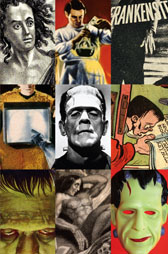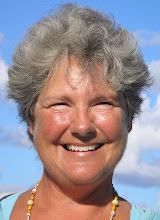Talk about the proverbial flash in the pan. For a week or so, everyone -- even Germaine Greer -- was writing about John Lauritsen's new book, THE MAN WHO WROTE FRANKENSTEIN.
Come up with an outrageous idea and you get publicity. Lauritsen's idea: that Mary Shelley -- woman, teenager, unpublished author, a nobody in every way, he seems to suggest -- could not have written the masterpiece called FRANKENSTEIN.
His alternate suggestion: Percy Bysshe Shelley.
Come now. Read these two passages and tell me which sounds like the novel FRANKENSTEIN:
Passage 1. "No, no, I will not live among the wild scenes of nature, the enemy of all that lives. I will seek the towns -- Rome, the capital of the world, the crown of man's achievements. Among its storied streets, hallowed ruins, and stupendous remains of human exertion, I shall not, as here, find every thing forgetful of man..."
Passage 2. "So, as we rode, we talked; and the swift thought, winging itself with laughter, lingered not, but flew from brain to brain,--such glee was ours, charged with light memories of remembered hours, none slow enough for sadness; till we came homeward, which always makes the spirit tame."
Passage 1 is from another novel by Mary Shelley, THE LAST MAN, written after PBS died, so in no way attributable to her poet husband.
Passage 2 is a bit of Percy Bysshe's "Julian and Maddalo," a conversation poem, about the most prosaic he got in his published writing. I removed the line endings to make it read like narrative.
This is not an argument of quality -- whose is better -- but an argument of style. Percy Bysshe Shelley? As Mary herself wrote in the 1831 introduction to her novel, he was "more apt to embody ideas and sentiments in the radiance of brilliant imagery, and in the music of the most melodious verse that adorns our language, than to invent the machinery of a story."
The handwriting of both Percy Bysshe Shelley and Mary Wollstonecraft Godwin, who became Mary Shelley during the composition phase of her novel, is visible on the manuscripts and has been carefully studied by scholars.
He may have been midwife (midhusband??) to the novel, but it was Mary who gave the monster story birth.
-- Susan Tyler Hitchcock
Author of the forthcoming FRANKENSTEIN: A CULTURAL HISTORY to be published by W. W. Norton in October 2007
Subscribe to:
Post Comments (Atom)





No comments:
Post a Comment